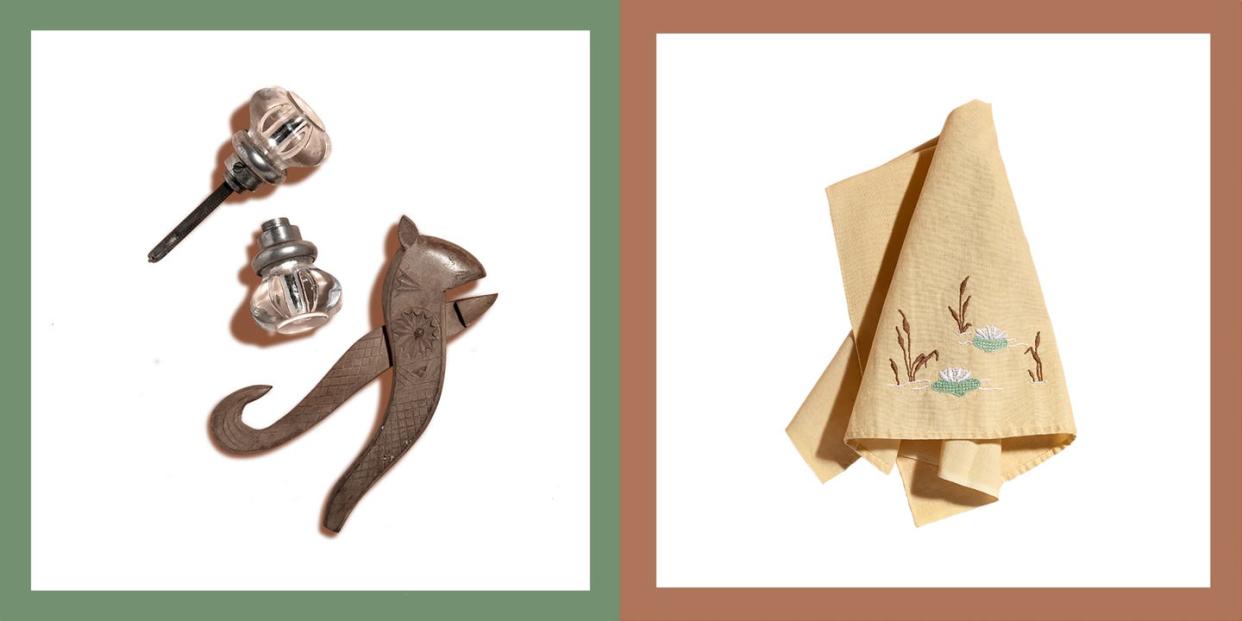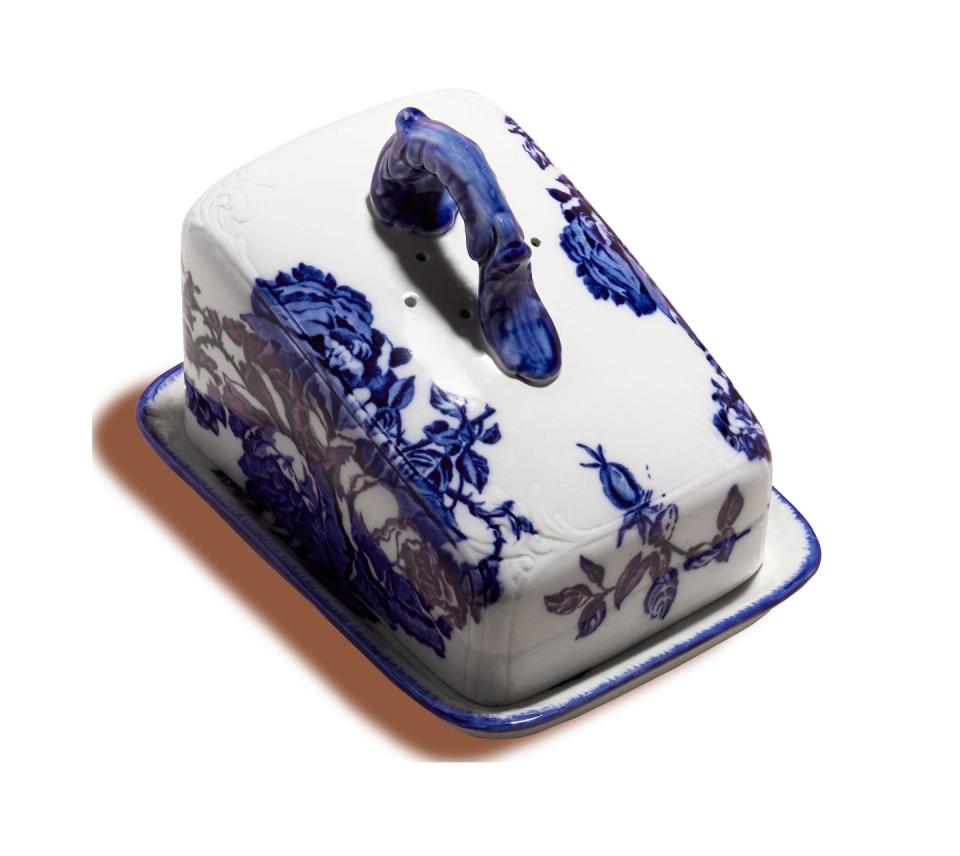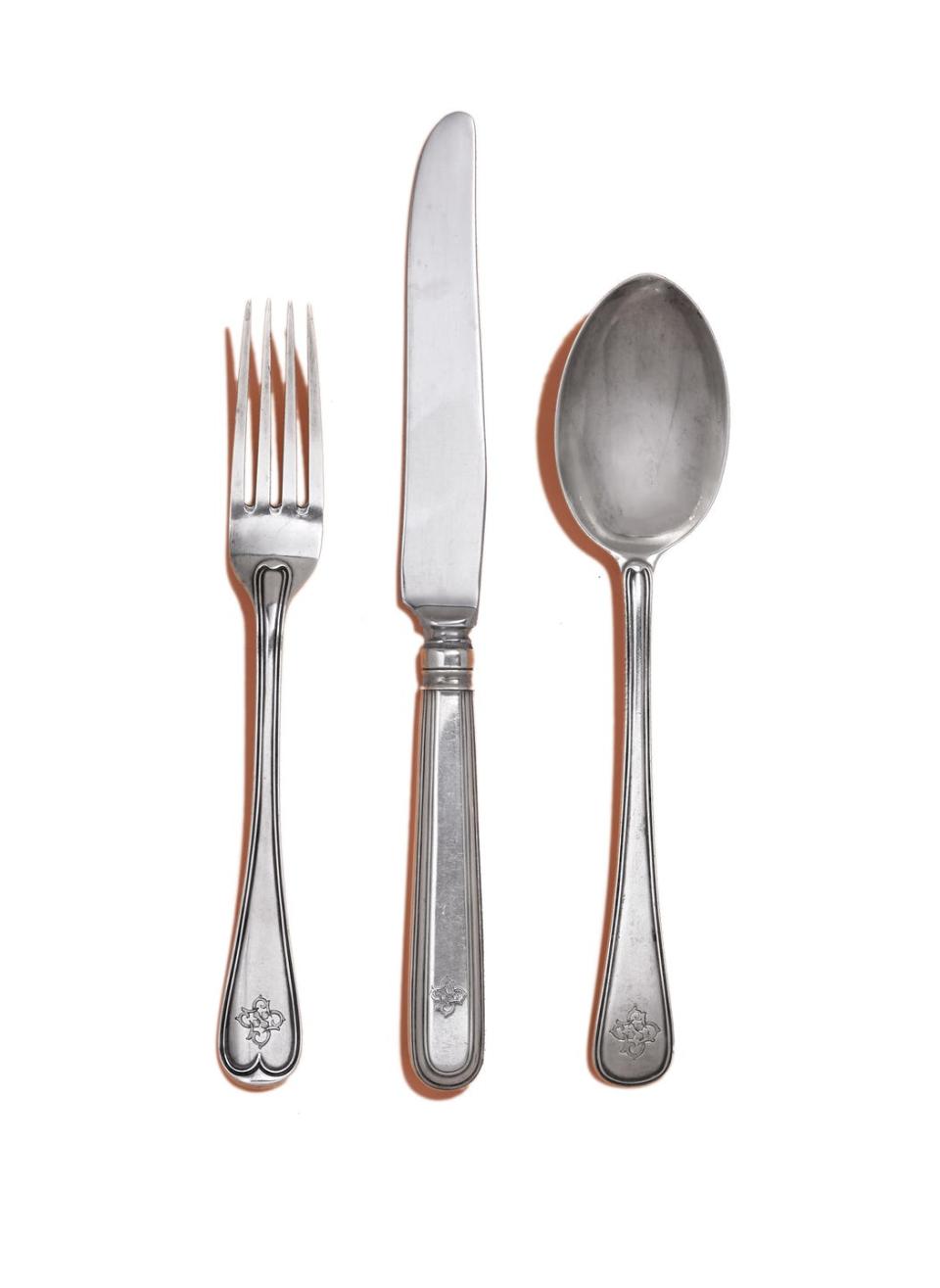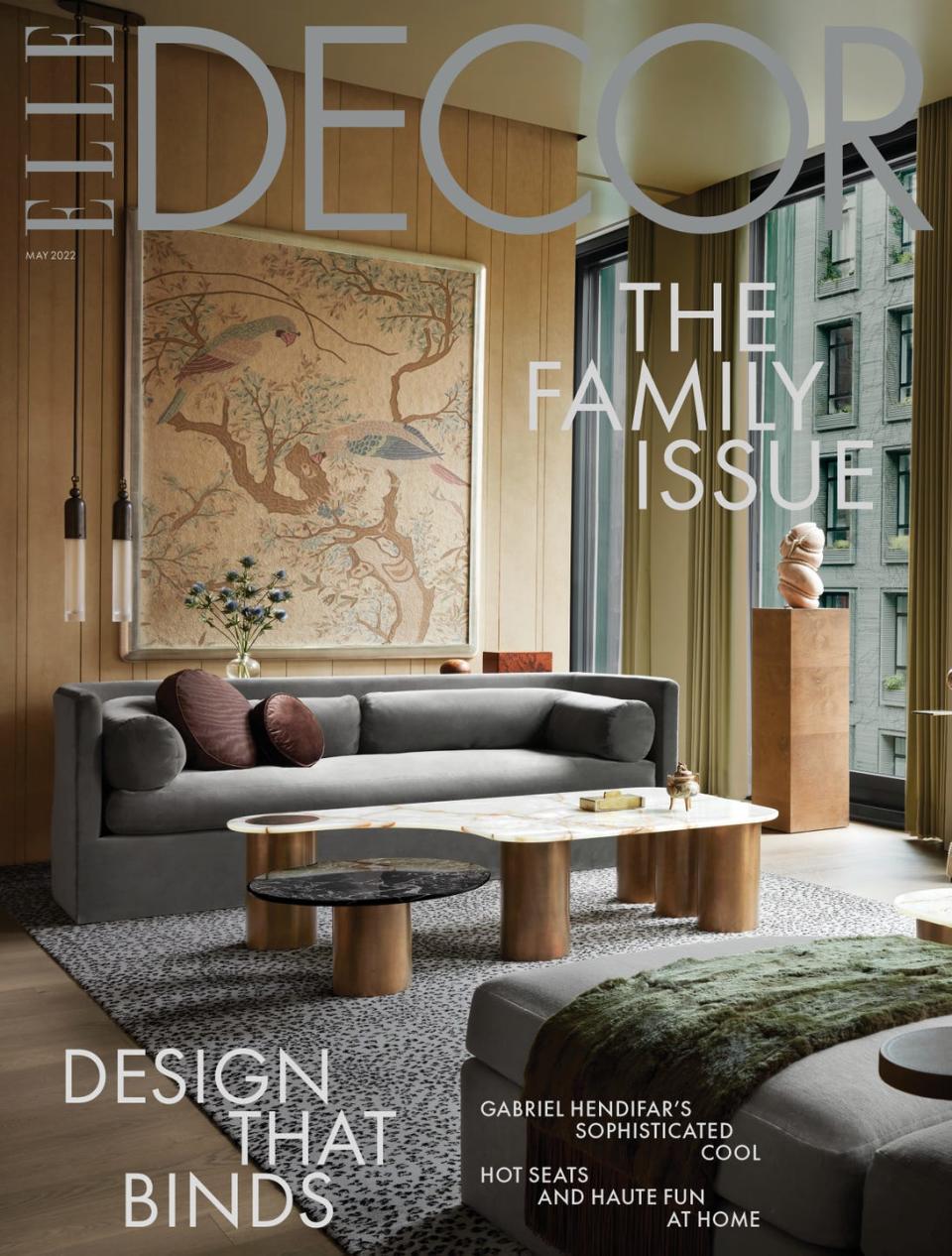How Being Raised by Hoarders Shaped My View of Home

Above: A mix of ephemera accumulated over decades by the author.
Recently, a 17-year-old neighbor came by to babysit for the first time. As she was leaving, she said, shyly, “I love your decor. Can I ask where you got the old things in your apartment?” I was very flattered but didn’t know how to answer: My family and stuff have a sort of complicated relationship.
People have used a lot of words to describe the apartment where I’ve lived for the past 10-plus years, first alone and now with a family: Layered. Maximalist. Quirky. Some assume—with the vintage-looking wallpaper, the gallery walls, old books, brass doorknobs stacked on the piano, and the mishmash of well-loved furniture and china—that my family has been here for generations. In a way, they’re right.
What I usually say is some variation of: “A lot of it comes from my parents.” Or, “I love flea markets and prefer things with history and wear.” None of this is untrue, but the fact is, I come from a family of hoarders. I don’t use that word loosely; I’m talking about the clinical term, often accompanied by a constellation of other psychiatric abnormalities, which is the focus of deeply distressing reality programming and both a source and a symptom of great personal pain.
Although many of us in subsequent generations have been therapized, and often medicated, my grandfather was not. Today, it would be easy to ascribe a score of words to behaviors that seemed to a child alternately thrilling and terrifying.

But his was a generation that had little money, few tools, and less inclination to treat the invisible, and he was proud of having avoided the horrors of “the bin” where each of his siblings had done stints and his mother had spent much of her life. He spoke openly and often about having married my grandmother partly so her stable genes would help counteract his own.

Certainly, she did her best to counteract the accumulation of stuff, first a steady trickle, which could sort of be explained as a consequence of youthful poverty; then a flow, which people began to describe as an amusing eccentricity; and finally an undeniable proof that something was very, very wrong. By the time of my grandfather’s death, every inch of his property was a shantytown of sheds, A-frames, decrepit boats (one filled with pressure cookers), a trailer, mountains of moldering carpet, and debris. There was also a cement mixer that, when I was little, I thought looked like a huge cupcake.
The genesis was not mysterious. From the time my mother and her four siblings were children, Saturdays were reserved for “the Rounds”: several hours devoted to hitting every tag sale, thrift store, and library discard container in the area. By the time I came along, it
had become a daily ritual for them, and the house was filled with a mind-boggling collection of brass animals, broken bread machines, and expired food. Every summer visit started with a rummage through the sacks where my grandfather had been accumulating treasure for me: sailors’ uniforms and dolls with matted hair, crucifixes and old barrettes.
These were some of my mother’s happiest memories, and she quickly initiated my father and then me into the Rounds. Fridays we mark the paper and plot our route, and by 8 a.m. the next day we are out the door. The forays themselves are often stressful, punctuated by squabbles about money and haggling and driving; whether my father needs another typewriter and whether a McCoy vase is really worth $3. But that moment when my eye spots what might be the scalloped hem of a D. Porthault towel in a cardboard box of discarded linens or the dull, deep glint of a single Bakelite napkin ring is worth it. From where I sit I can see the beaten-copper Arts and Crafts–style bowl, the flow blue–like cheese dome, the pair of (maybe) Biedermeier chairs I carted home in triumph on our last foray.
I know, intellectually, that things do not ensure security or happiness. If they’re neither needed nor used nor resellable, nothing is actually “a bargain.” And I know that the clutch of reflexive physical anxiety I feel when my husband wants to toss away something broken is not necessarily healthy. Curation is a discipline, and not one I find natural. Because one day I will need that squirrel-shaped nutcracker.
And yet, I love my home. Working with the motley assortment of things I inherited, or scrounged, I long ago decided to lean into its eclecticism, creating a sort of private museum. The stories behind the things might not be what someone imagines at first glance: They are not heirlooms or pieces of commercial value. Maybe I even remember all the bad associations—the public fights, the tears. But they sit here, chosen, cared for, and loved. That is family history, too.
Sadie Stein is an editor at the New York Times Book Review.

This story originally appeared in the May 2022 issue of ELLE DECOR. SUBSCRIBE
You Might Also Like

